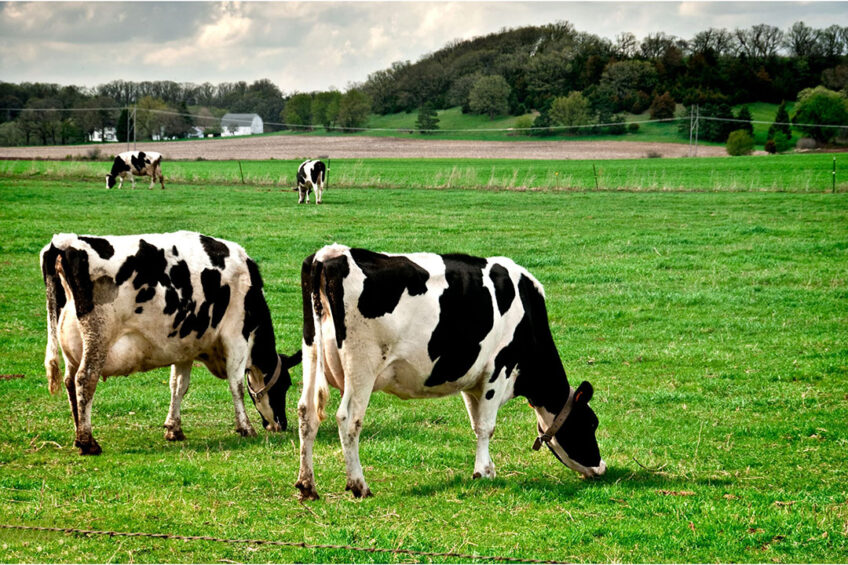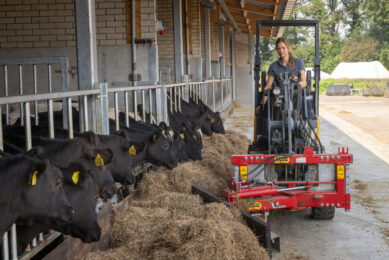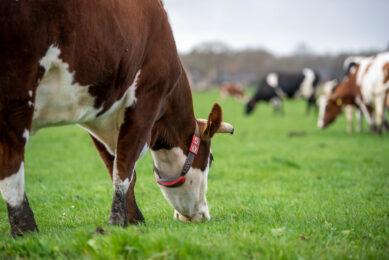Recent figures: High costs and reduced income to hit UK dairy

Many higher-yielding, year-round calving herds made the most of last year’s rocketing milk prices by investing in feed to maximise production. But circumstances have now reversed, and milk prices have plummeted, meaning producers need now to tighten their belt and reduce costs.
Figures produced at last week’s UK Dairy Show at the Royal Bath and West Showground show that dairy farm profits are set to drop rapidly in the coming year and businesses will need to adapt quickly to manage input costs and cash flow over the winter.
The Milk Cost of Production report by the Farm Consultancy Group (FCG) and Old Mill, is based on dairy clients with a 31 March year-end. It shows that:
· Average profits increased by 146% between 2021/2 and 2022/3 to £914/cow due to a 56% increase in milk income per cow and increased non-milk income (calf and heifer sales).
· Combined, that more than offset the steeply higher input costs, which rose from £2,300 per cow to £3,182 per cow, considering labour but not rent, interest, tax, capital expenditure or basic payments.
Dan Heal, rural accountant at Old Mill, said last year was the only one of the past 5 where milk income has easily covered the cost of production, but since the summer, milk prices have fallen quickly while some costs are still stubbornly high.
Annabel Hole, rural administrator at FCG, believes efficient producers will still be able to make a living in the longer term, although tax bills landing in January 2024 could cause issues.
“Though costs are falling, the cost base is still 30% higher than 2 years ago due to electricity costs doubling, feed still being 40% higher, and most fertilisers having been bought forward at double current market prices,” said Hole.
Profits are forecast to drop back to £415/cow in 2023/4 due to high costs and reduced income: “With interest rates 5% plus higher, basic payments declining, and extra investment required to comply with water and environment regulations, there is a cash squeeze looming. Mistakes in the next 12 months will be punished severely, financially.”
Each year the report looks at the top and bottom 10% of herds and the gap continues to widen, with the former making £1,668/cow versus the latter at £187/cow: “Larger, higher yielding herds were more suited to the market conditions of 2022/3. These systems typically perform well in times of high prices, although have high-cost bases for when prices fall,” said Heal.
Common themes among the best-performing herds were:
- They benchmark the costs of production
- Are involved in discussion groups
- Are willing to change
- Plan and budget ahead
Commenting on the current state of the UK dairy industry, NFU regional dairy board chair Stephen Dark admitted that dairy farmers were feeling under pressure due to low prices, but hoped the situation would improve in the coming year.
“Currently, prices have declined by 30-35% for most producers from the high prices of the summer and autumn of 2022, and this looks set to continue in the short term at least. Many dairy farmers will be able to ride out the storm, but for the smaller family businesses, the next year will be crunch time. Factors like whether they have succession in the business, secure land tenure or new infrastructure requirements could well become the deciding factor alongside milk price.”
Dark said the reduction in support payments and the delayed roll-out of the new Sustainable Farm Incentives had left many still considering their best options, but the last 2 Global Dairy Trade auctions have shown some increases, and easing milk supply in the US and other continents was creating positive moves on commodity prices.
Join 13,000+ subscribers
Subscribe to our newsletter to stay updated about all the need-to-know content in the dairy sector, two times a week.










